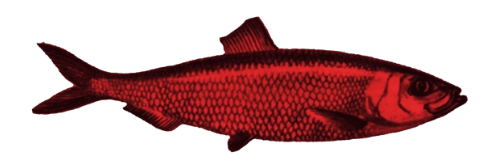We have been working with Stover Country Park since 2021, to help them plan and shape an arts strategy for this beautiful site, close to Newton Abbot in South Devon. The Park contains 114 acres of woodland, lake and marsh, heathland, grassland with several areas of Special Scientific Interest.
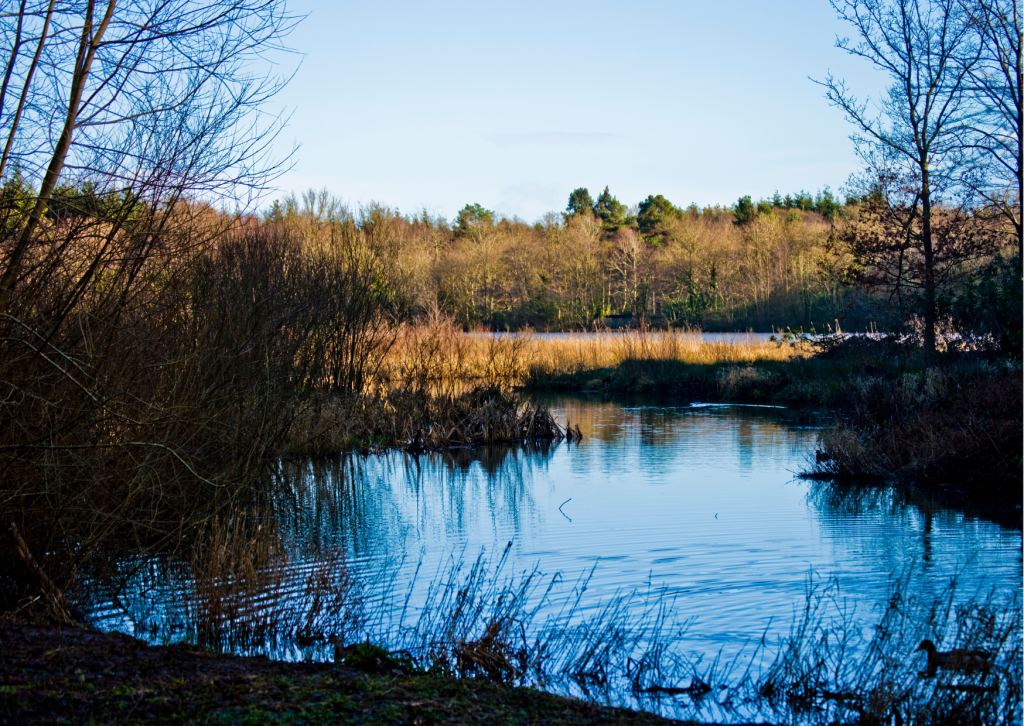
In September 2021, we undertook a period of research. This included workshops with a cross section of locals, some with a deep connection to the place, including landscape stewards and some who were invited to visit the park for the first time. We also presented Stover Stories, a weekend of small scale interactive ‘happenings’ across the site, which included conversations visitors about their feelings about the park and what they thought about our offerings and gathering quantative data.
Stover Gallery
We set up a transitory gallery at a beautiful and popular spot close to the lake. The lake and much of the park had been landscaped in the mid 19th Century, in order to create wonderful views to be seen from the big house or from strategic points around the park itself. We invited people to take a frame and to select their favourite view, which resulted in lots playing – with the view, taking photos of themselves and other creatures within the frame and exploring the idea of framing itself.
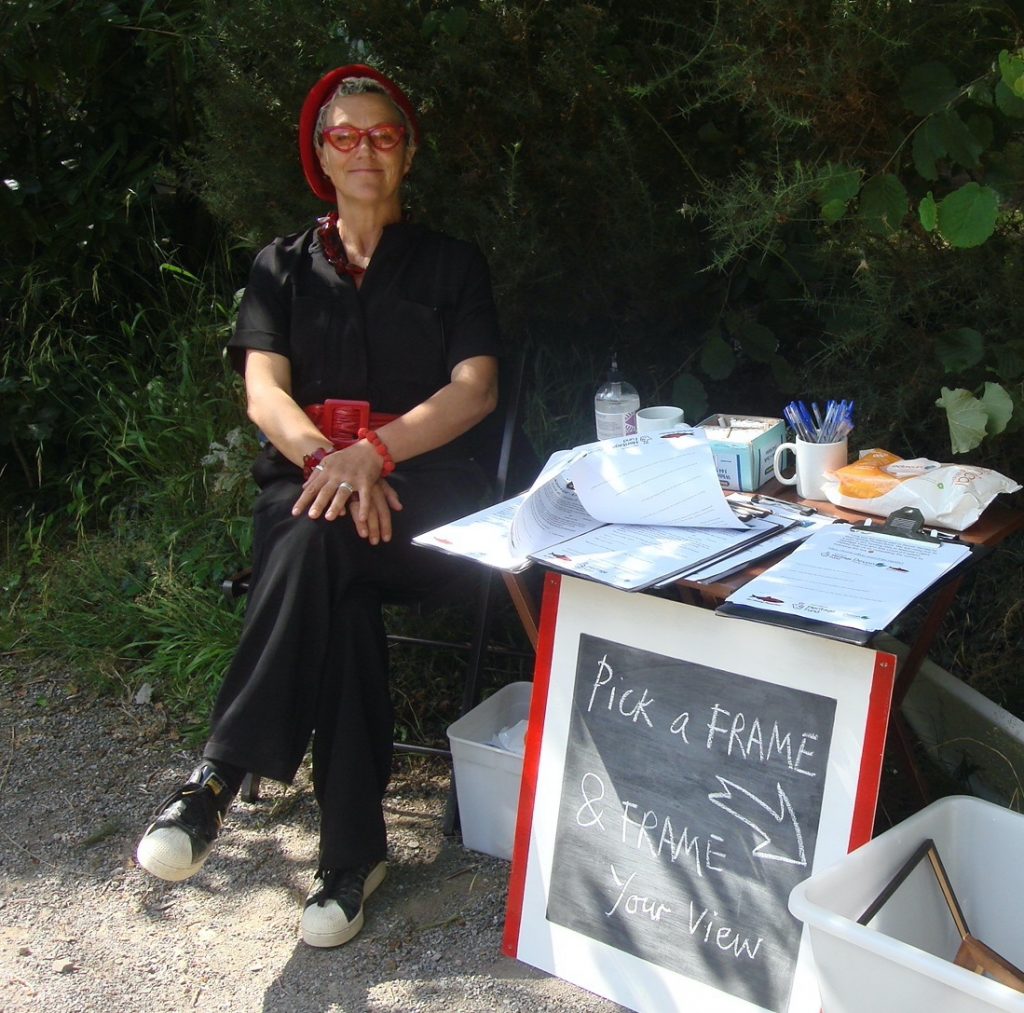
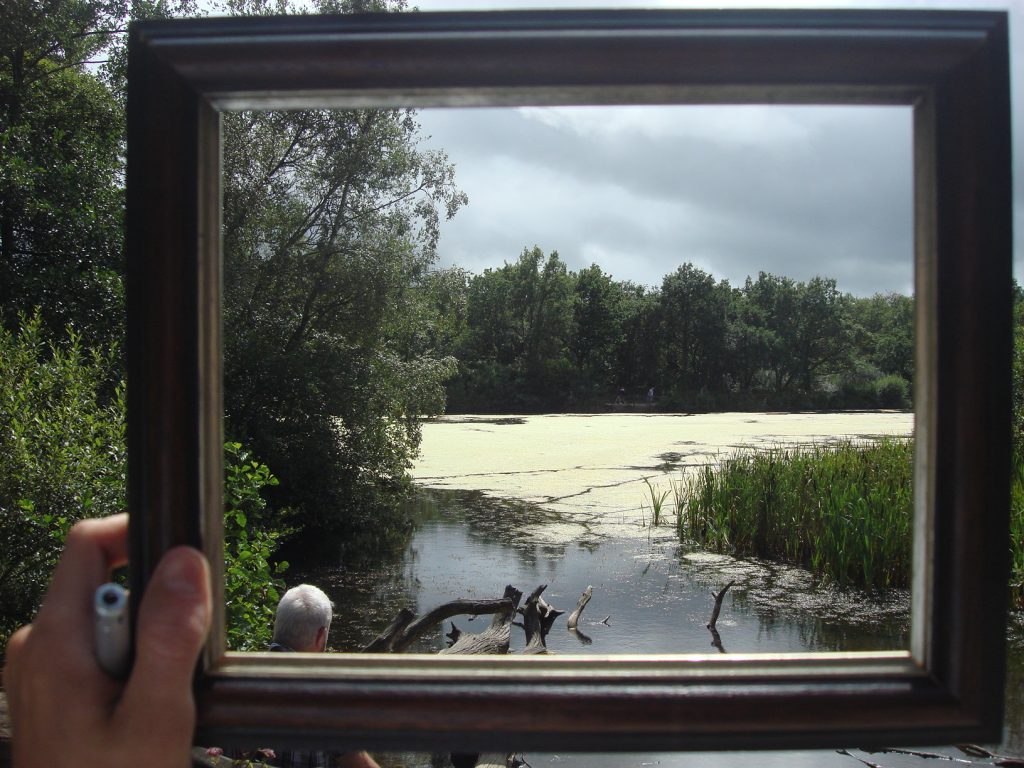
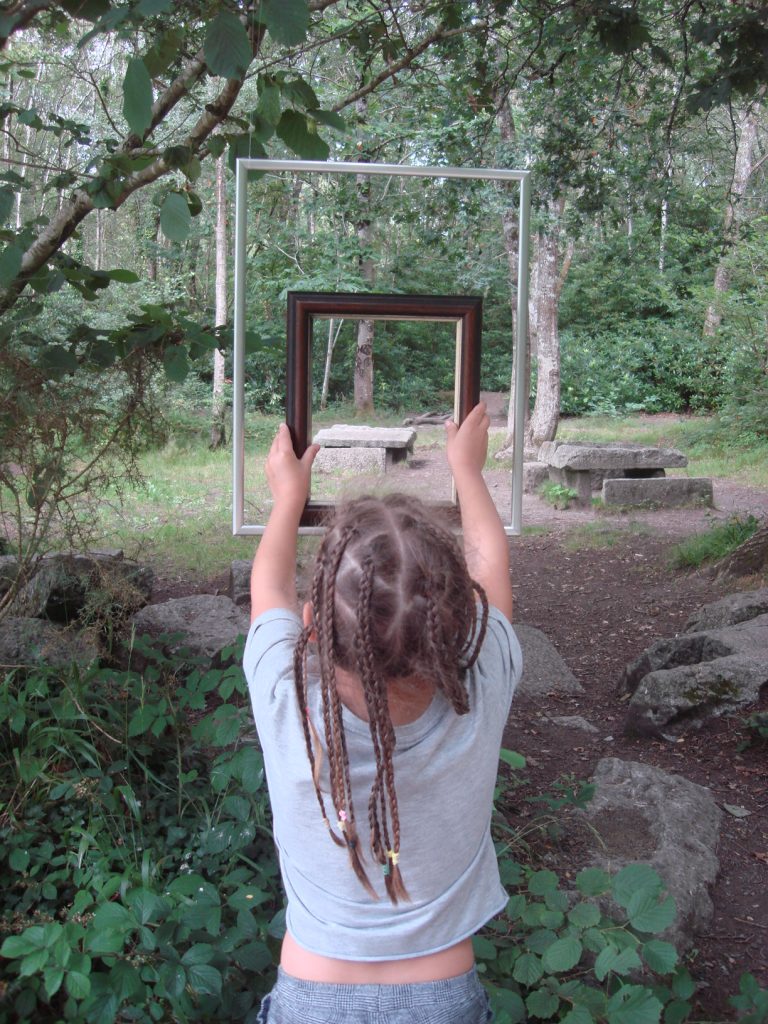
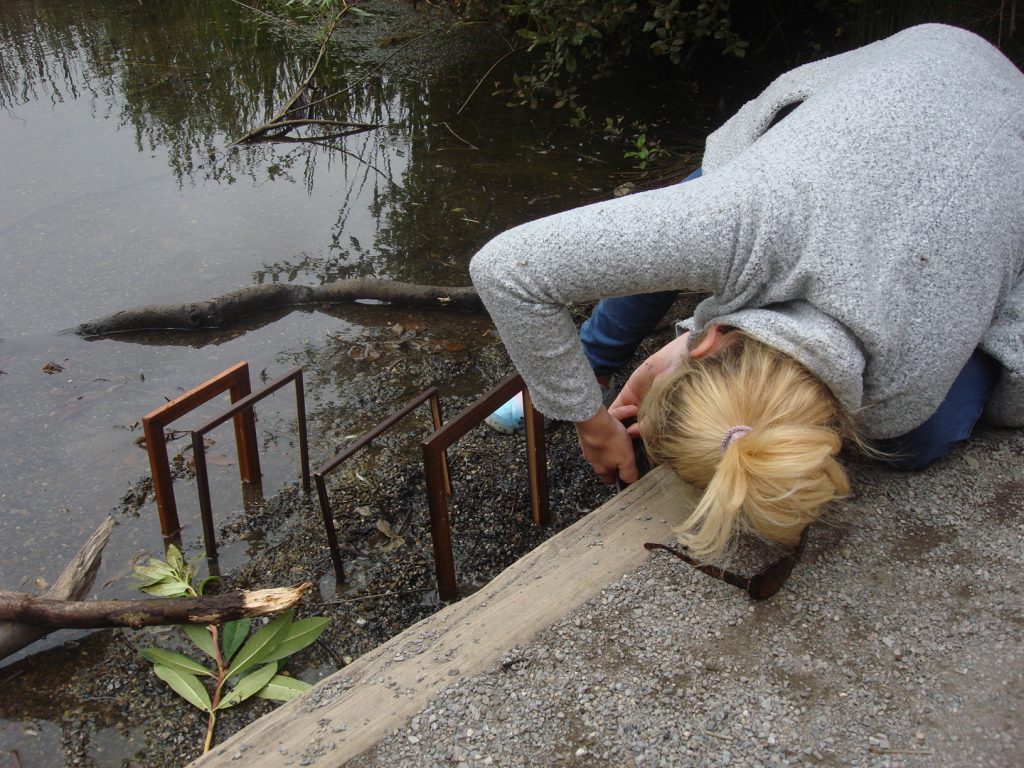
Gold Rush Girl
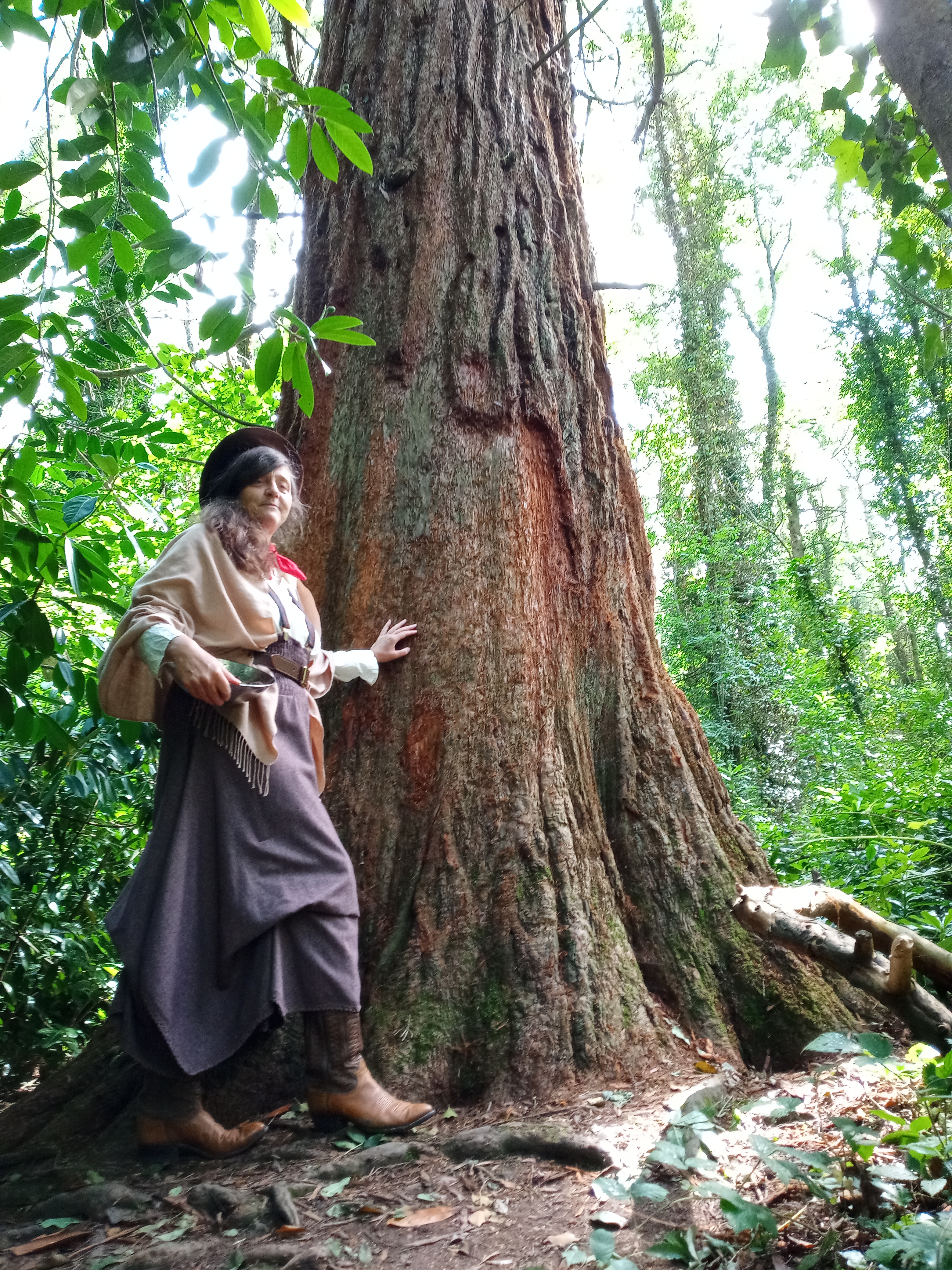
The park includes a wellingtonia tree, also known as giant sequoia or giant redwood. This is the last remaining example of a historic avenue of wellingtonias planted along the old carriage drive in the second half of the 19th Century. It’s likely that the seeds for these trees were amongst the first which were brought back from California during the Gold Rush by an adventurer and seed collector called William Lobb and propagated at the famous Veitch Nurseries in Exeter.
A character on the path pointed out the tree, which is set back from the path and often goes unseen. She regaled visitors with the story of William Lobb, who is credited with introducing the wellingtonia and monkey puzzle tree and shared the ecological narrative of these massive and long-lived trees, leading to many fascinating conversations.
Sounds of the Carriage Drive
We placed a series of buckets along a stretch of the main Carriage Drive, placing speakers inside which played looped recordings of various means of transport that would have travelled this route. The sounds of a horse drawn carriage, an early motorcar and a motorcycle came and went, conjuring up images of people travelling down this road in times gone by. People congregated around the buckets in clusters, discussing the sounds, laughing, puzzled, intrigued. Paschale was placed nearby to ask the curious, ‘if you could choose your method of transport to travel through you own private park, what would it be?’
The video below was taken early in the morning, when the park was quiet…
